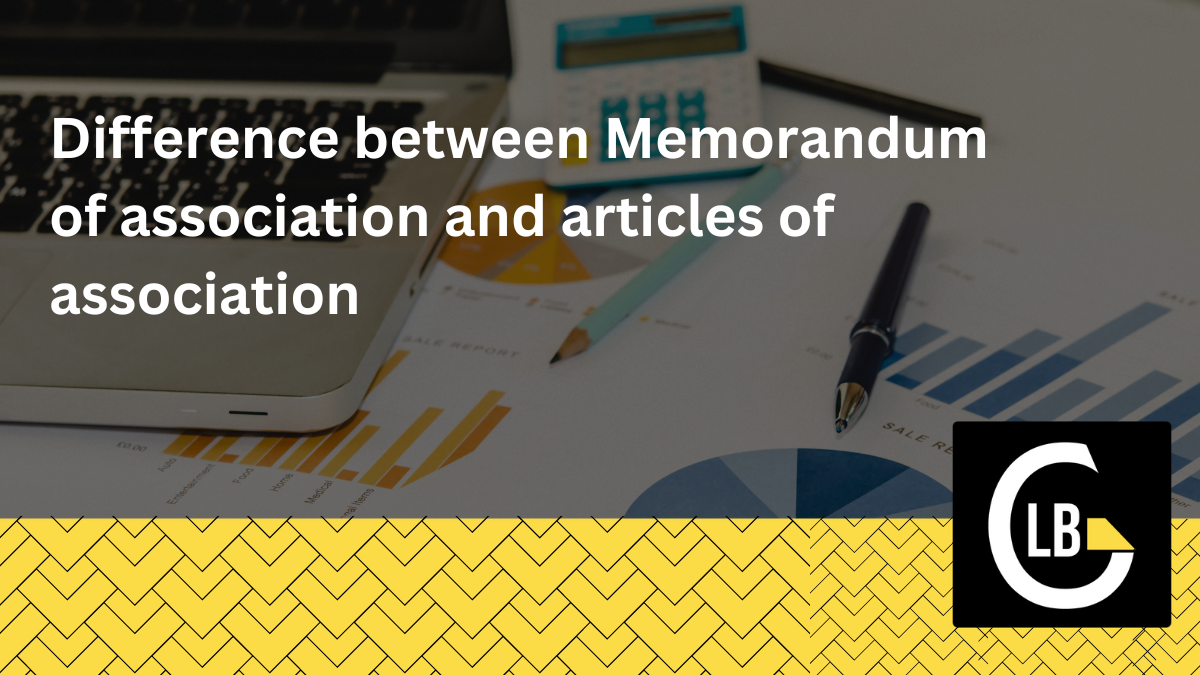When starting a business, you’ll come across two essential documents: the Memorandum of Association (MoA) and the Articles of Association (AoA). These documents aren’t just legal formalities—they form the backbone of your company. So, what do they mean, and how are they different? Let’s break it down in simple terms.
What is a Memorandum of Association (MoA)?
The Memorandum of Association outlines the purpose of your company and its basic details. Think of it as the company’s ID card, explaining why the company exists and what it can do. It lists fundamental facts like the company’s name, location, and business objectives. Essentially, it sets the boundaries of what the company is allowed to do by law.
The MoA is also a public document, meaning anyone can access it. It’s especially important because if your company does anything outside of what’s listed in the MoA, that action could be considered illegal.
Key elements in the MoA:
- Company name: The legal name of your company.
- Registered office: The physical location where your company is based.
- Business activities: What your company is allowed to do (this is crucial).
- Liability clause: Defines the shareholders’ financial responsibility.
- Capital clause: Details the amount of money invested into the company when it started.
What is an Articles of Association (AoA)?
While the MoA is the “what,” the Articles of Association is the “how.” The AoA is like your company’s rulebook for how it will operate on a day-to-day basis. It sets the guidelines for running the company, covering everything from how meetings should be held to how directors are appointed.
The AoA is mainly about managing the internal workings of the company. While the MoA shows the company’s limits, the AoA shows how to manage everything inside those limits.
Key elements in the AoA:
- Voting rights: How shareholders can vote on company matters.
- Director roles: How directors are chosen, what they can do, and how they can be replaced.
- Meetings: Rules on how to conduct board meetings and general meetings.
- Dividends: How the company will share profits with its shareholders.
How are MoA and AoA Different?
Here’s a simple way to understand the difference: The MoA is the purpose statement that tells the world what your company is and what it can do. The AoA is the rulebook that tells people inside the company how things should be run.
Here’s a quick side-by-side comparison to make it clear:
| Feature | Memorandum of Association (MoA) | Articles of Association (AoA) |
| Purpose | Defines what the company can do | Defines how the company is run |
| Scope | Focuses on legal boundaries and business goals | Focuses on internal management and procedures |
| Can it be changed? | Harder to change | Easier to amend with shareholder approval |
| Who can see it? | Publicly available | Usually for internal use but can be public |
| Required for registration? | Mandatory for company registration | Needed to set company operations |
Why Do You Need Both?
Both the MoA and AoA are necessary to form and run a company. The MoA legally creates the company and sets its purpose. The AoA ensures the company has a proper system to operate effectively.
Without the MoA, the company doesn’t exist. Without the AoA, the company wouldn’t have a clear way to function. Together, they form the complete structure of your business, making sure everything is set up properly and runs smoothly.
Conclusion
- The Memorandum of Association explains what your company is and what it’s allowed to do.
- The Articles of Association explain how your company will be managed on a daily basis.
Both documents are essential for laying a strong foundation for your business. By understanding the role of each, you can ensure your company is built to last and operates smoothly.
